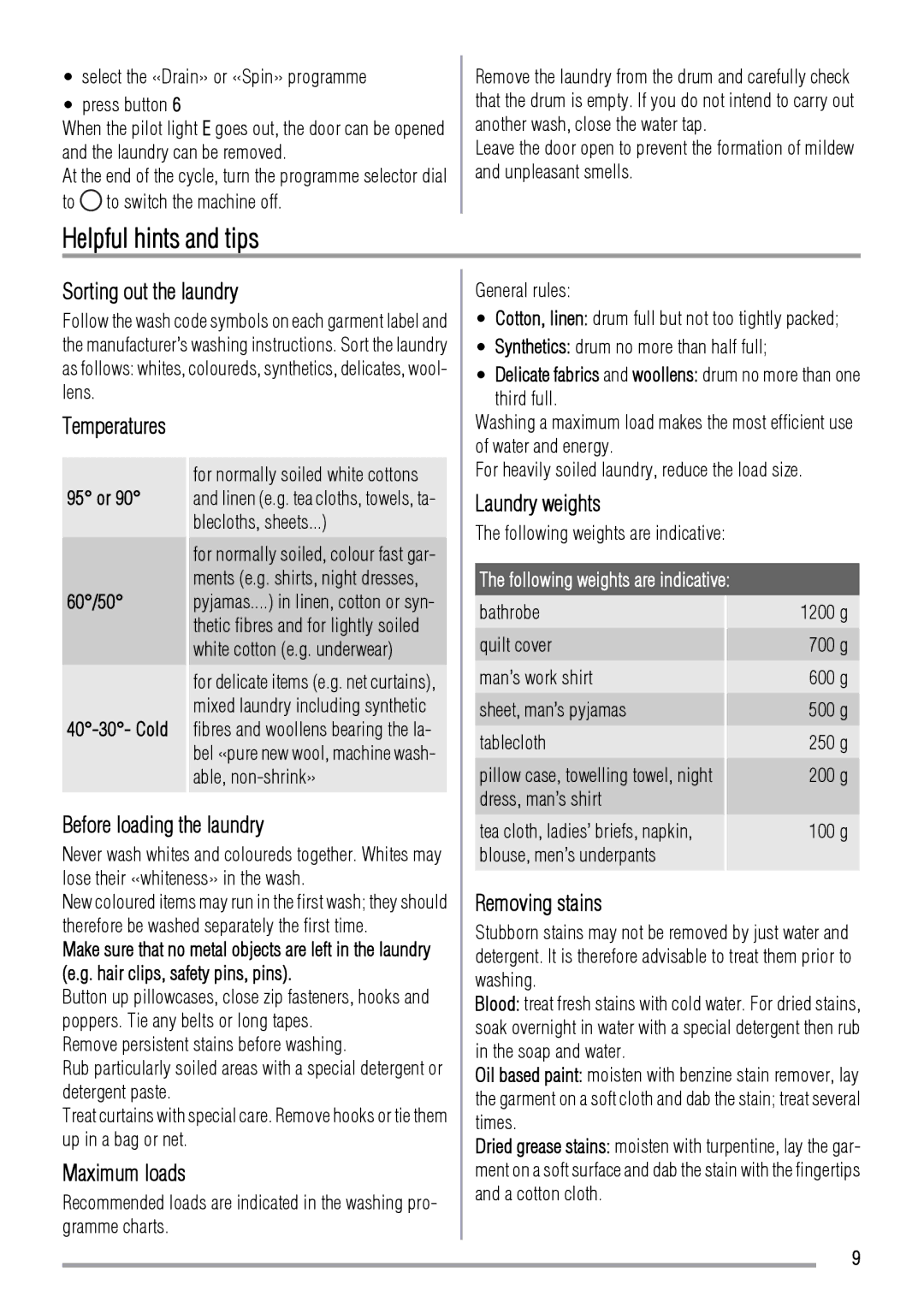FCS 1020 C specifications
The Zanussi FCS 1020 C is a compact yet highly functional washing machine that combines efficiency with modern design, making it an ideal choice for households with limited space. Known for its user-friendly features, this washing machine is designed to provide a cleaning performance that satisfies even the most demanding laundry requirements.One of the standout features of the Zanussi FCS 1020 C is its impressive load capacity. With the ability to handle up to 5 kg of laundry, it is perfect for small families or individuals who need a reliable machine without taking up too much room. The compact design is tailored for tight laundry spaces, ensuring that you can enjoy efficient washing without sacrificing precious square footage in your home.
Equipped with a selection of 15 different washing programs, the FCS 1020 C caters to various fabric types and laundry needs. These programs include settings for delicate fabrics, fast cycles, and cotton, allowing users to customize their washing experience to suit every clothing item. Additionally, the machine features a quick wash cycle that can clean lightly soiled items in just 30 minutes, making it convenient for those on the go.
Energy efficiency is another hallmark of the Zanussi FCS 1020 C. With an A+++ energy rating, this washing machine minimizes energy consumption while delivering outstanding cleaning results. This not only contributes to a greener environment but also helps in reducing electricity bills, making it a cost-effective solution for everyday laundry needs.
The machine is also designed with user convenience in mind. Its easy-to-use control panel provides clear instructions and settings, making it accessible for users of all ages. The delay start function is another beneficial feature, allowing users to set the machine to begin washing at a specified time, thus fitting laundry cycles into busy schedules.
Moreover, the FCS 1020 C boasts a reliable spin speed of 1,000 RPM, which ensures that clothes come out drier, reducing the time needed for drying. This feature, combined with its robust build quality, provides peace of mind that your laundry will come out clean and damage-free, maintaining the integrity of your garments.
In conclusion, the Zanussi FCS 1020 C offers a perfect blend of functionality, efficiency, and convenience. With its compact size, comprehensive washing programs, excellent energy efficiency, and user-friendly features, it stands out as an optimal choice for anyone seeking a reliable washing machine tailored to meet modern laundry demands.

